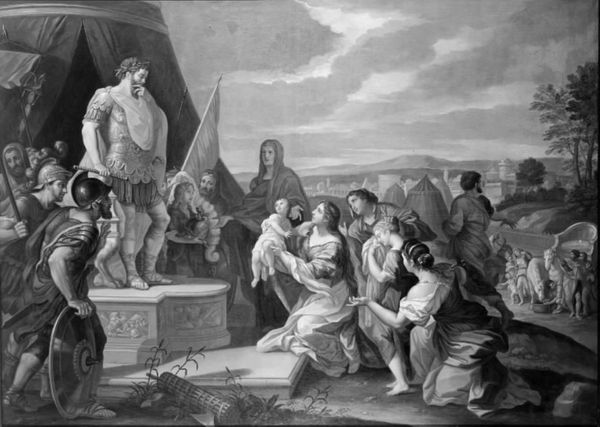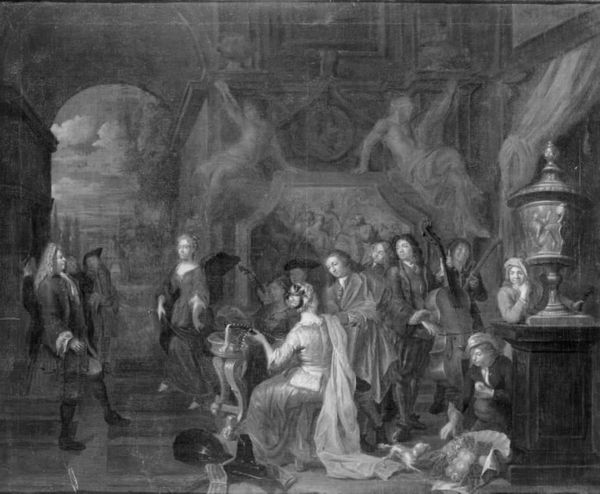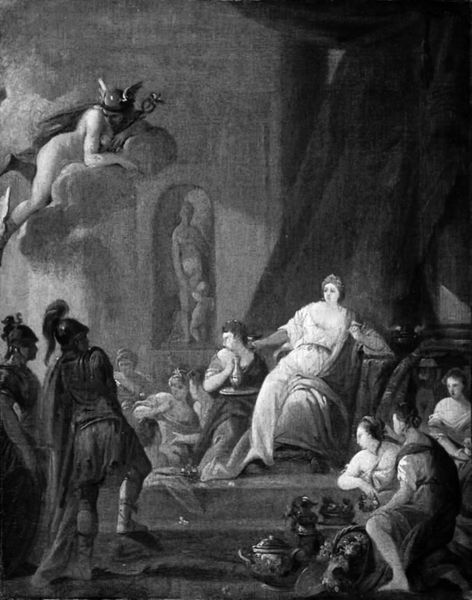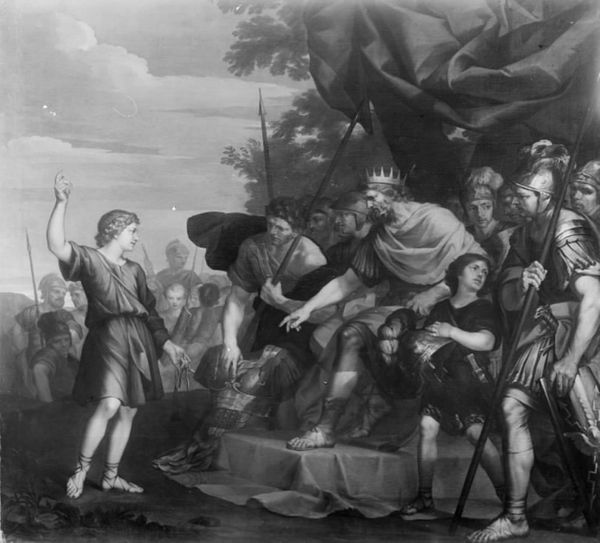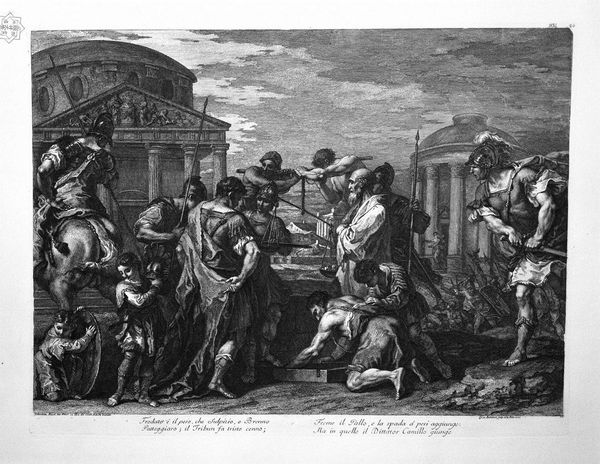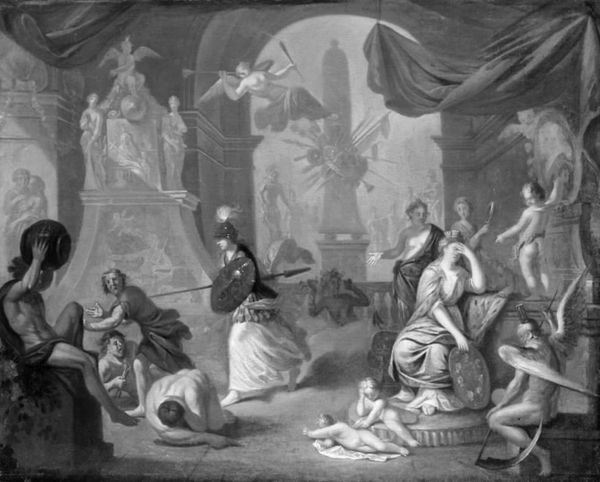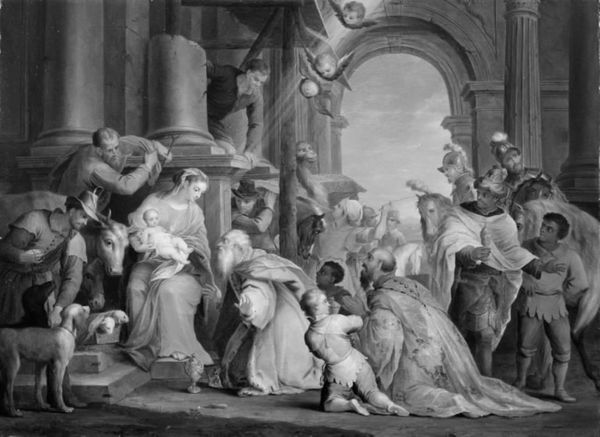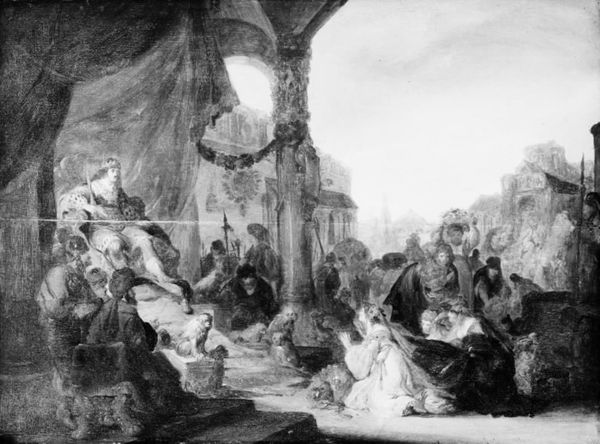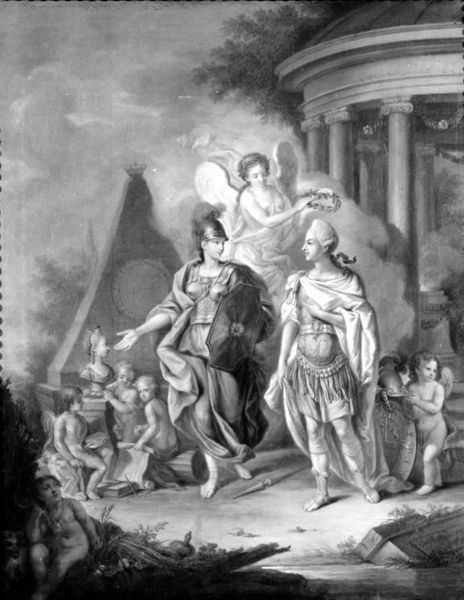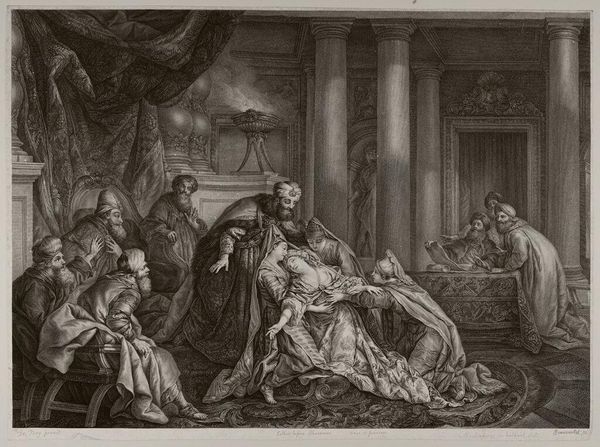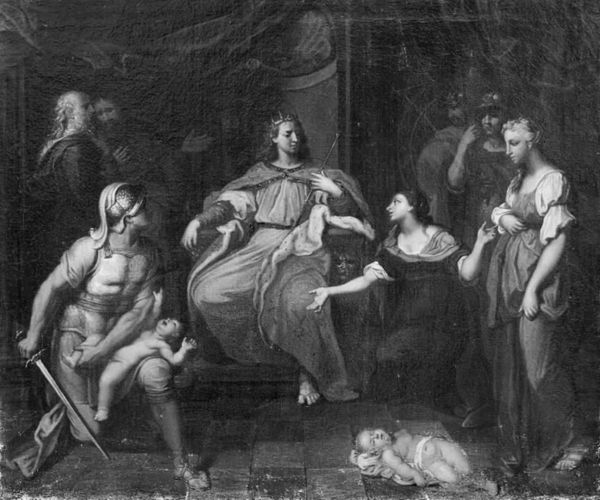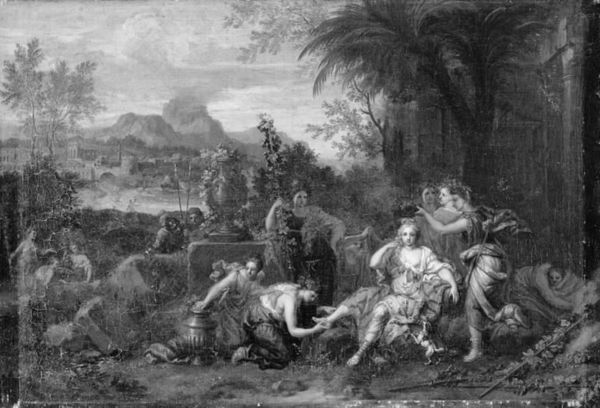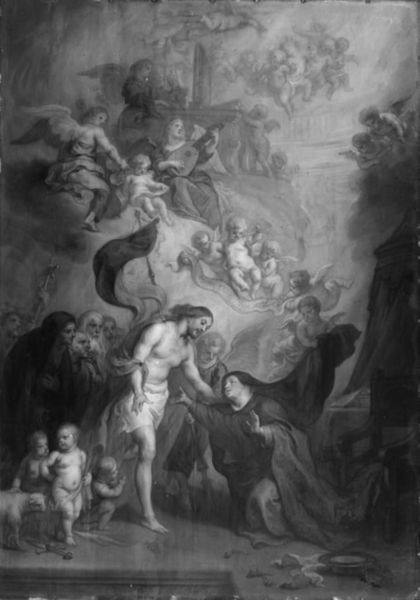
painting, wood
#
baroque
#
painting
#
sculpture
#
charcoal drawing
#
figuration
#
charcoal art
#
portrait reference
#
wood
#
history-painting
#
academic-art
#
charcoal
#
graphite
Dimensions: 62 cm (height) x 76 cm (width) (Netto)
Curator: Let's spend a few moments contemplating this piece, "Christ before Pilate." The work comes to us from Arnold Houbraken, made sometime between 1675 and 1719. Editor: A historical painting, grand in scale! I'm immediately drawn to the architecture; those Romanesque arches frame Christ's figure almost theatrically. It's interesting seeing a sculpture perched above a classical facade in the background of what should feel like an important trial. It sets a tone…almost oppressive. Curator: Oppressive is definitely a keyword. Houbraken does a compelling job of capturing the fraught, agonizing moment before Christ's fate is sealed. If you look closely, there are so many little vignettes being played out amongst the crowd of faces… Editor: The materials employed in pieces like this matter, don't they? Look at the drapery. I want to know how much that material cost; who produced it? Who did they think this canvas was going to move when they stretched and prepared it? The labor in that background contributes to the power dynamic; one based in class separation! All the wealth and materials of an empire condensed on this very charged moment of legal deliberation! Curator: Fascinating point. Perhaps this juxtaposition serves to amplify the themes present in the scripture that would have been familiar to audiences viewing the painting back then: wealth versus poverty; innocence versus accusation. I am especially drawn to Christ’s gaze. Or maybe lack of gaze is the best way to phrase it? He doesn't engage with Pilate or the bloodthirsty mob. He’s somewhere else entirely. Editor: You know, I hadn't even noticed Christ's "absentee" expression initially! What struck me were the textures. Is that paint layered? The architecture suggests that there might even be sculptural inspiration to behold if you view the work close enough. Even today the sheer volume is impressive! It makes one consider what kinds of physical limitations an artist living at this point in time would contend with. What can be transported easily? What are patrons going to want in their residences versus their institutions of worship or learning? How might Houbraken address a potential commission differently? Curator: So interesting you should mention it, because for me, thinking about what could and couldn’t be brought or sold really opens a door to considering Houbraken's skill at bringing scripture and artistic convention into dialogue. We think of "Christ Before Pilate" today, but there’s really a whole conversation happening between faith and art history throughout the work, a consideration of the tangible as well as the spiritual. Editor: I hadn't considered all that; I appreciate your insights!
Comments
No comments
Be the first to comment and join the conversation on the ultimate creative platform.
